.jpg)
The link between Georgia and St. George
The Georgians themselves call their country Sakartvelo. The origins of Georgia’s name in English are obscure. One theory points to the Middle Ages when Christian crusaders swept through the region on their way to the Holy Land. At that time, it was part of the Persian Empire and the people here were devoted to St George. Theory has it that the crusaders made the connection and named the country Georgia. Today, evidence of the link to St George is in the golden statue of the saint slaying a dragon dominating Tbilisi's central square. He is also Georgia's patron saint and the national flag featuring his red cross on a white background is everywhere in Georgia.
The history of Georgia's wine-making
Arguably the oldest wine region in the world, the fertile valleys of the south Caucasus, according to historians, are where grapevines were cultivated and wine produced in the Neolithic period - more than 7000 years BC. With such a long history, traditions of viticulture and wine-making are closely intertwined with the national identity of Georgians.
Archaeologists have traced back the roots of Georgian viticulture to when people of the South Caucasus discovered that wild grape juice turned into wine when it was left buried through the winter in a shallow pit. This knowledge was nourished by experience, and from 6000 BC inhabitants of the current Georgia were cultivating grapes and burying clay vessels, kvevris, in which to store their wine ready for serving at ground temperature. When filled with the fermented juice of the harvest, the kvevris are topped with a wooden lid and then covered and sealed with earth. Some may remain entombed for up to 50 years. UNESCO added the ancient traditional Georgian wine making method using the Kvevri clay jars to the UNESCO Intangible Cultural Heritage Lists
Due to the many millennia of grape growing and wine production in Georgian history and its prominent economic role, the traditions of wine are considered entwined with and inseparable from the national identity.
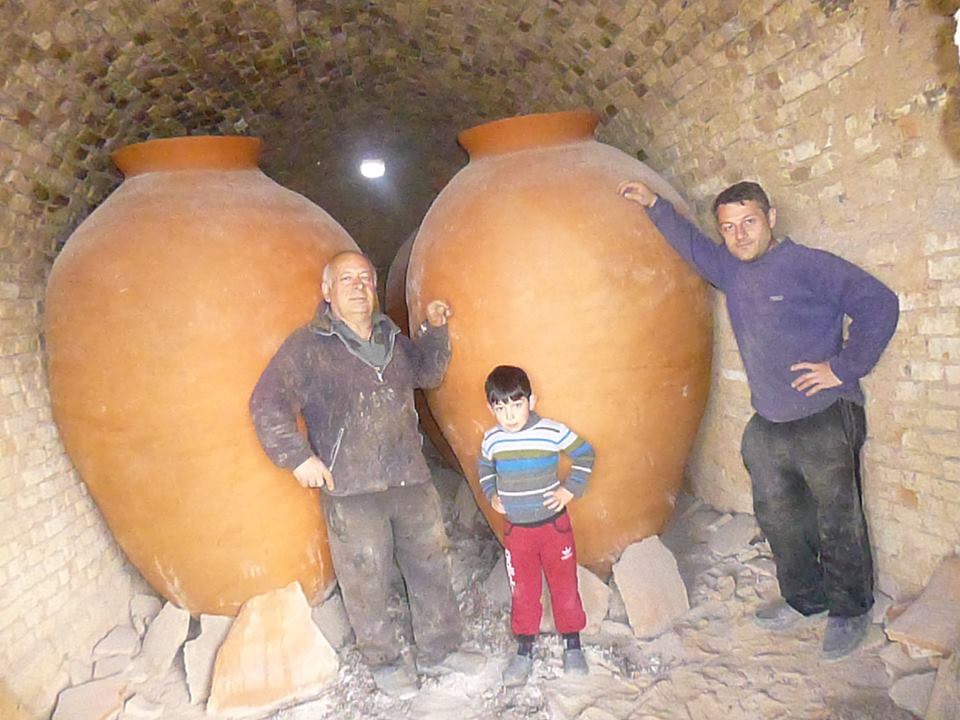
Wine vessels
Wine vessels of every shape, size and design have been the crucial part of pottery in Georgia for millennia. Ancient artifacts attest to the high skill of local craftsmen. Among vessels, the most ubiquitous and unique to Georgian wine-making culture are probably the Kvevris, very large earthenware vessels with an inside coat of beeswax.
The continuing importance of wine-making and drinking in Georgian culture is also visible in various antique works of art. Many of the unearthed silver, gold and bronze artifacts of the 3rd and 2nd millennia BC bear imprints of vines, grape clusters and leaves. The State Museum of Georgia has wine and drinking artifacts dating back to the 2nd millennium BC. For centuries, Georgians drank, and in some areas still drink, their wine from drinking horns and skins from their herd animals. The horns were cleaned, boiled and polished, creating a unique and durable drinking vessel.
Learn more about Georgian (and other) drinking horns, a fascinating subject!
Georgian viticulture
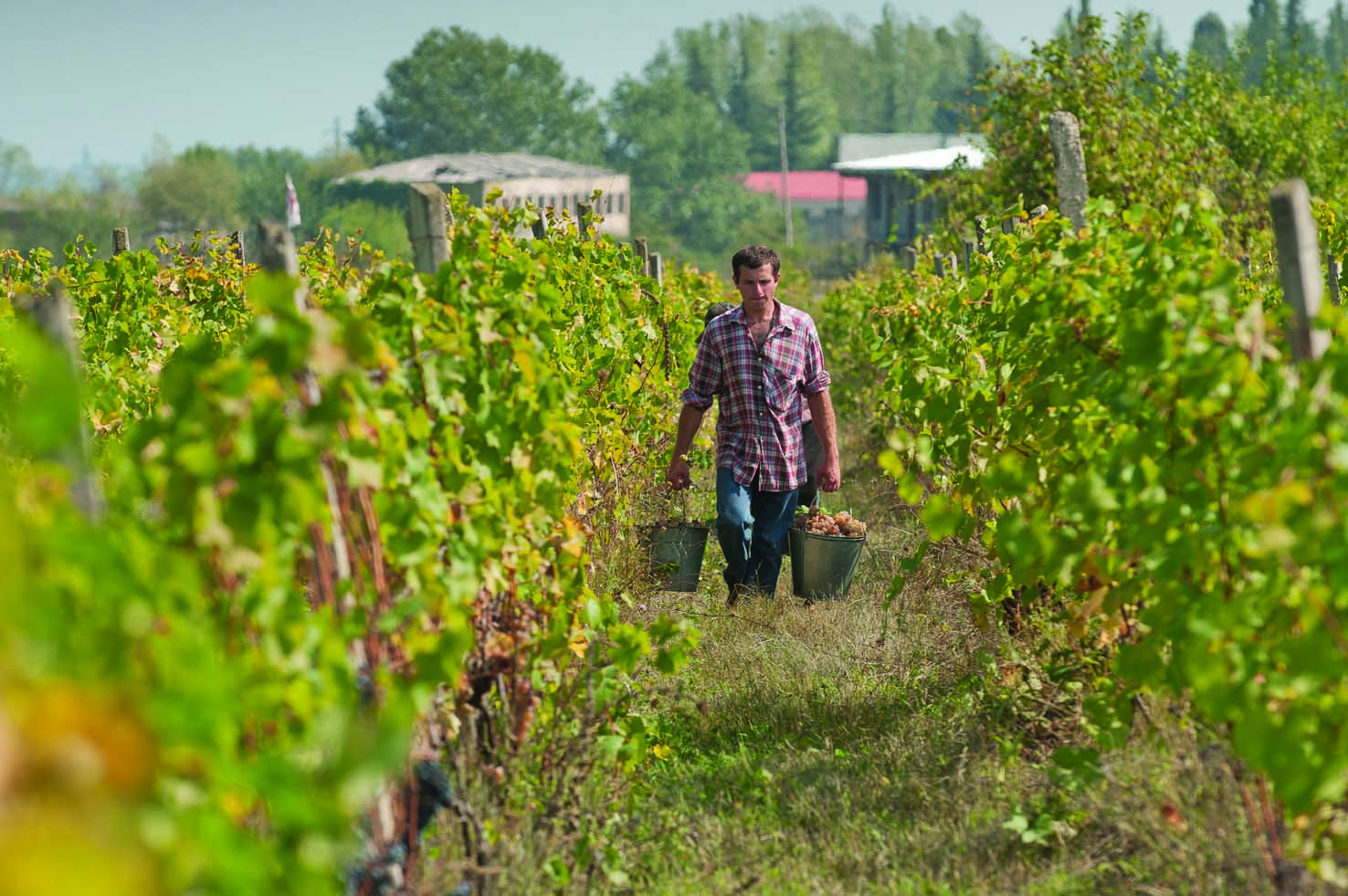
Presently, wine is produced by thousands of small farmers using primarily traditional techniques of wine-making, as well as certain monasteries, and modern wineries.
Georgia territorial and climate conditions are optimal for wine-making. Extremes of weather are unusual: summers tend to be warm and sunny, and winters mild and frost-free. Natural springs abound, and the Caucasian Mountain streams drain mineral-rich water into the valleys. Georgia's moderate climate and moist air, influenced by the Black Sea, provide the best conditions for vine cultivating. The soil in vineyards is so intensively cultivated that the grape vines grow up the trunks of fruit trees eventually with the fruit hanging down when they ripen.
Wine regions and wine production
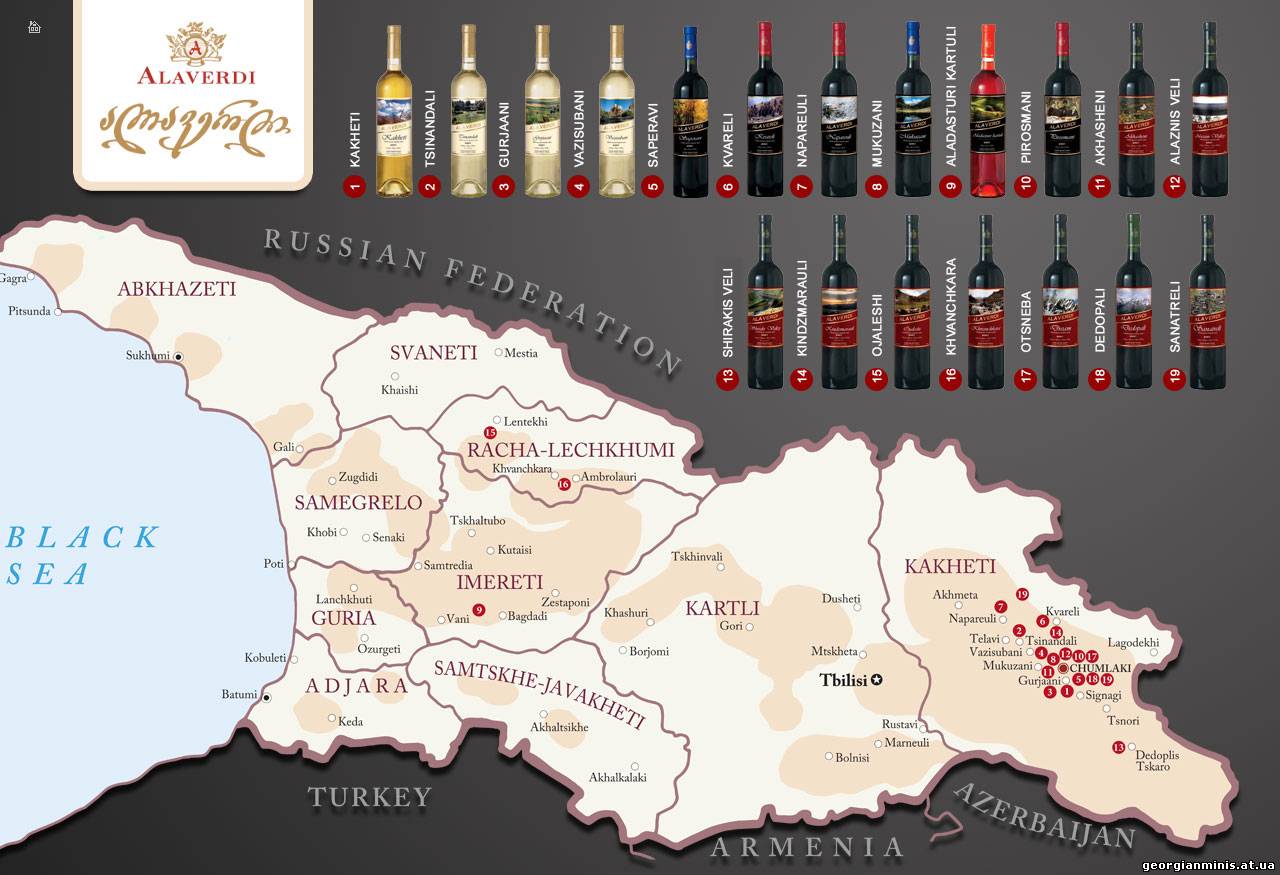
Among the best-known Georgian wine regions are Kakheti (further divided into the micro-regions of Telavi and Kvareli), Kartli, Imereti, Racha-Lechkhumi and Kvemo Svaneti, Adjara and Abkhazia.
Traditionally, Georgian wines carry the name of the source region, district, or village, much like French regional wines. Georgian wines are usually a blend of two or more grapes. For example, one of the best-known white wines, Tsinandali, is a blend of Rkatsiteli and Mtsvane grapes from the micro regions of Telavi and Kvareli in the Kakheti region.
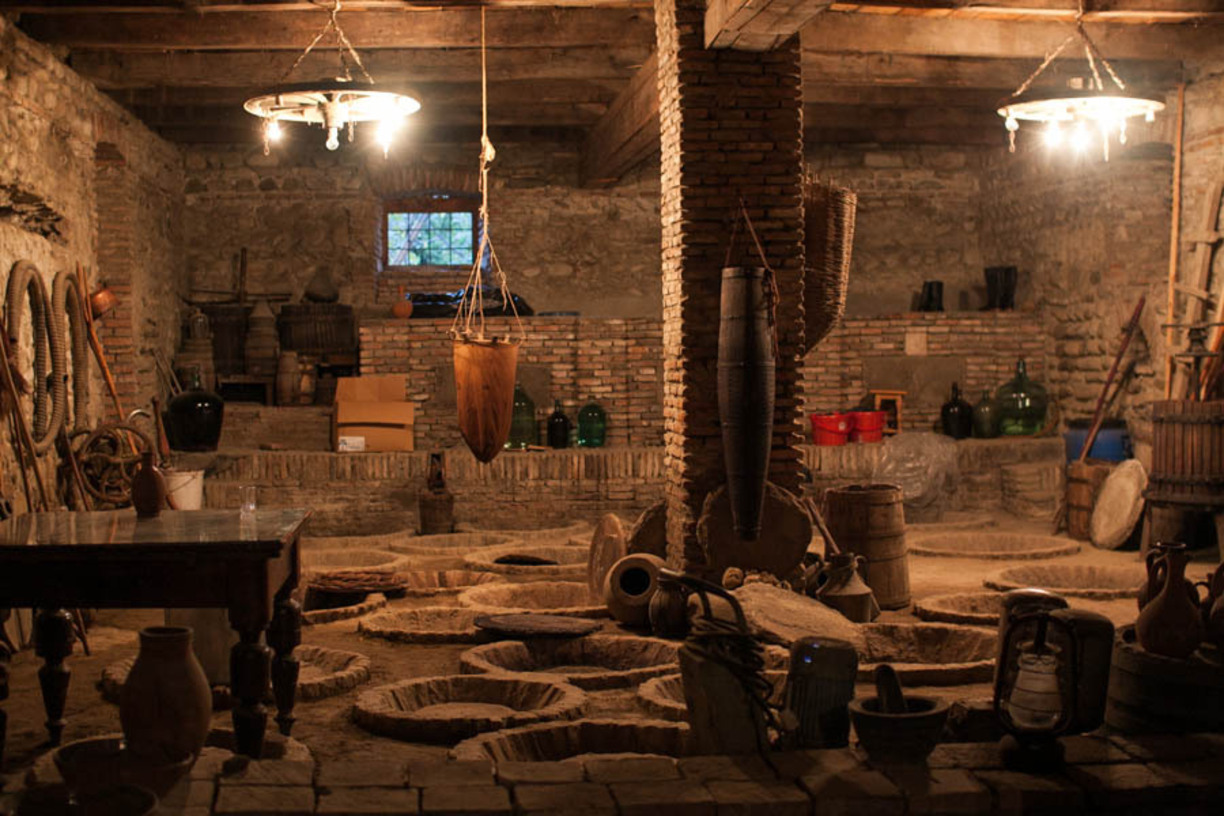
Wine-making process
Wines are made in the traditional Georgian method, rather the European method meaning that the wine is made in the conical clay vessels mentioned previously, kvevris. The wine undergoes a longer period of fermentation and maturation in these vessels. According to the old tradition, which recently has renewed interest from Georgian wine-makers, whole bunches of grapes (with stalks) are run into a wooden trough, typically carved from a single piece of wood. The grapes are foot-trod, so as not to damage the pips, then the must is run off directly into the kvevri. After pressing, the skins, pips, and stalks (pomace) are added to the vessel for the alcoholic fermentation, which may last from 20-40 days, depending on the variety and the quality of the vintage. Once the fermentation is completed and the cap starts to sink, the kvevri will be capped with stone or glass lids, which are sealed with limestone clay or earth, and left in the ground until the following spring.The wine is separated from the pomace and run off into another kvevri for a further year of aging. Red wines generally have a longer maceration and fermentation period.
This extended maceration through the spring is also known as eastern, or Kakhetian-style wine-making, as it is associated with Kakheti, the eastern province and source of 70% of all Georgian wine.
Grape varieties
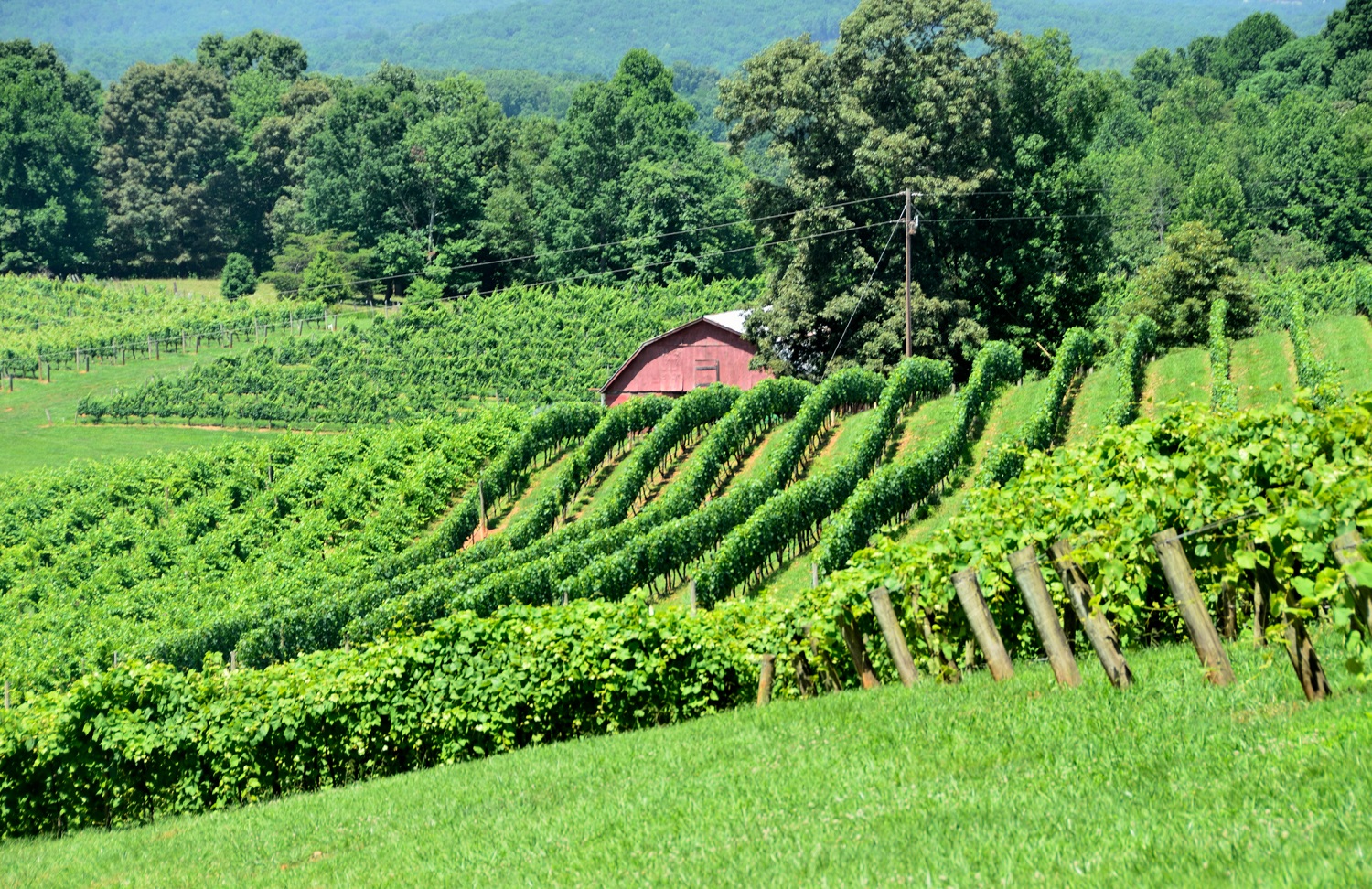
Georgia is home to at least 525 distinct and mostly indigenous grape varieties (Ketskhoveli et al. 1960), but only about 45 are in current commercial production, the most common white grapes being: Rkatsiteli, Mtsvane Kakhuri, Goruli Mtsvane, Chinuri. Khikhvi. Krakhuna, Kisi, Tsitska, andTsolikouri. Red grapes: Saperavi,Tavkveri, Shavkapito, Chkhaveri, Ojaleshi, Aleksandrouli, Mujuretuli, Aladasturi, Usakhelouri, Otskhanuri Sapere, Jani and Dzvelshavi.
More About Georgia
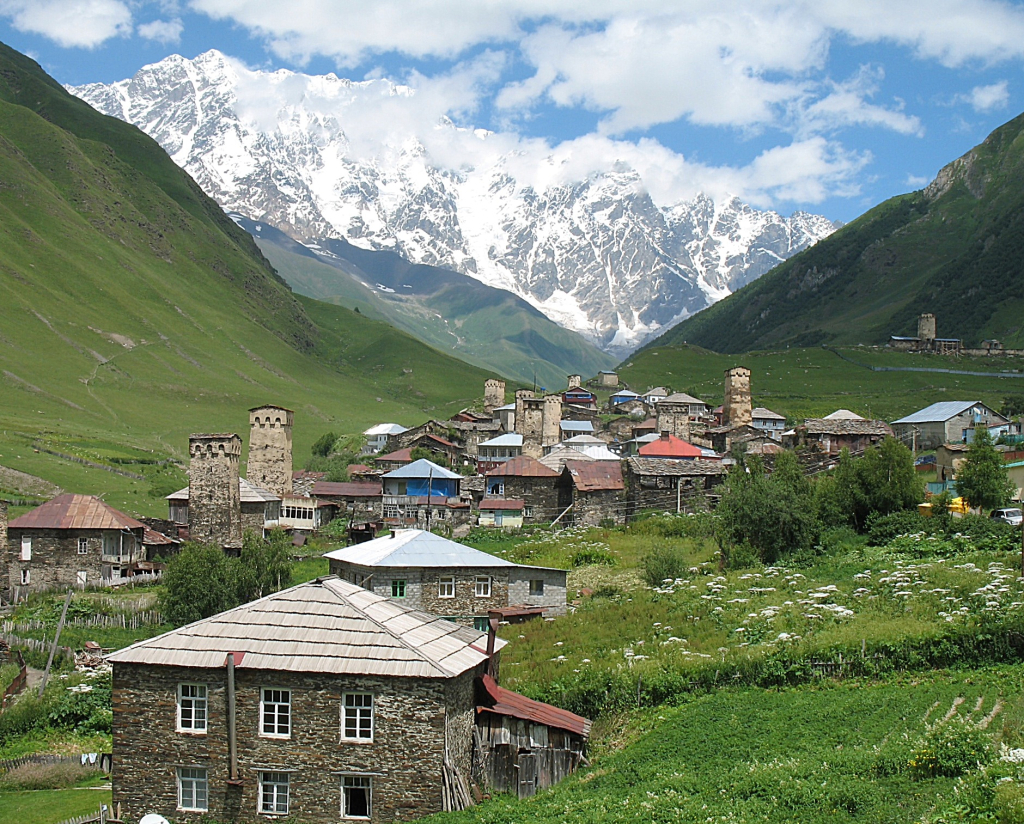
The Caucasus Mountains marking the border between Georgia and Russia, are the highest mountains in Europe - not the Alps! These dramatic mountains, with their terrifying hairpin roads and hidden villages cut off at winter, are the stuff of legend. Today they are increasingly becoming a destination for climbers, walkers or skiers looking for adventure. With all this, its ancient wine-making traditions and local food products, Georgia is becoming one of the trendy places for wine tourism.
Slow Tours offers a number of Tours in Georgia also Wine Tours in Europe and Food Tours